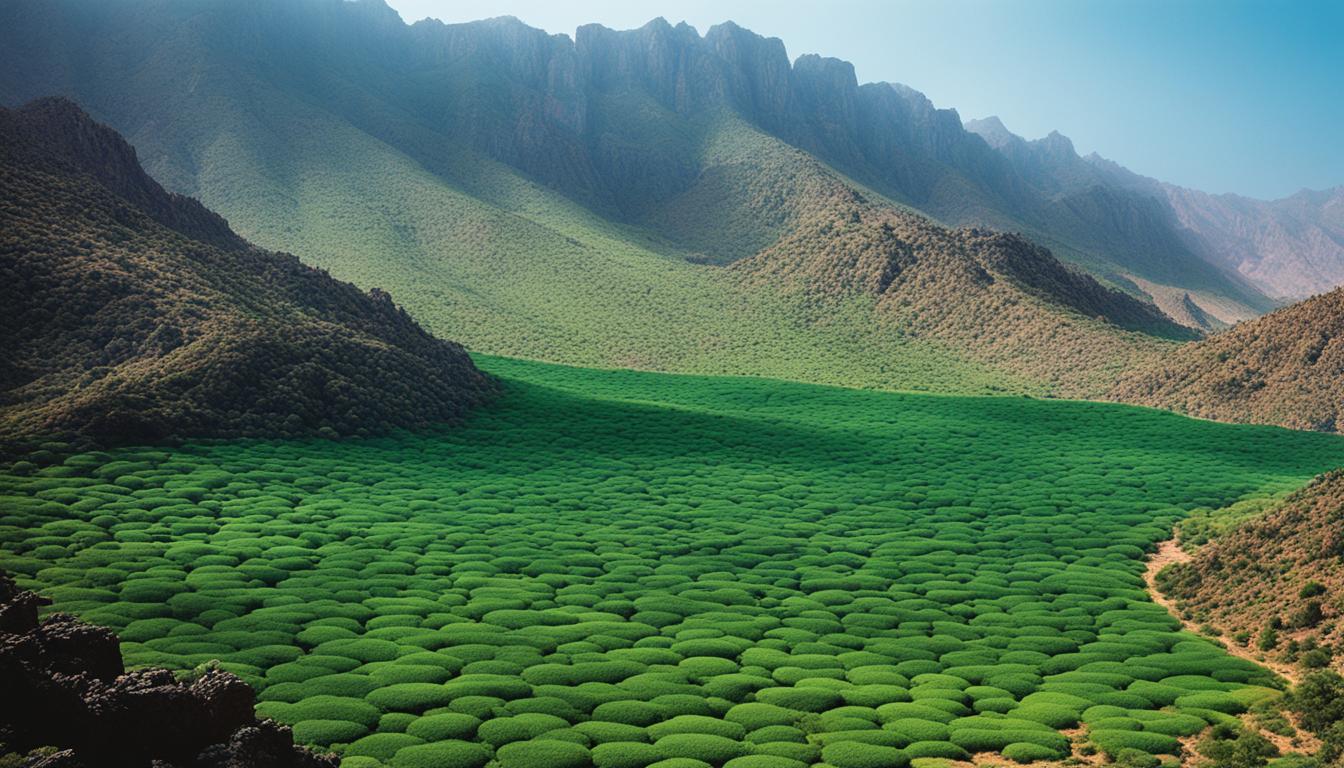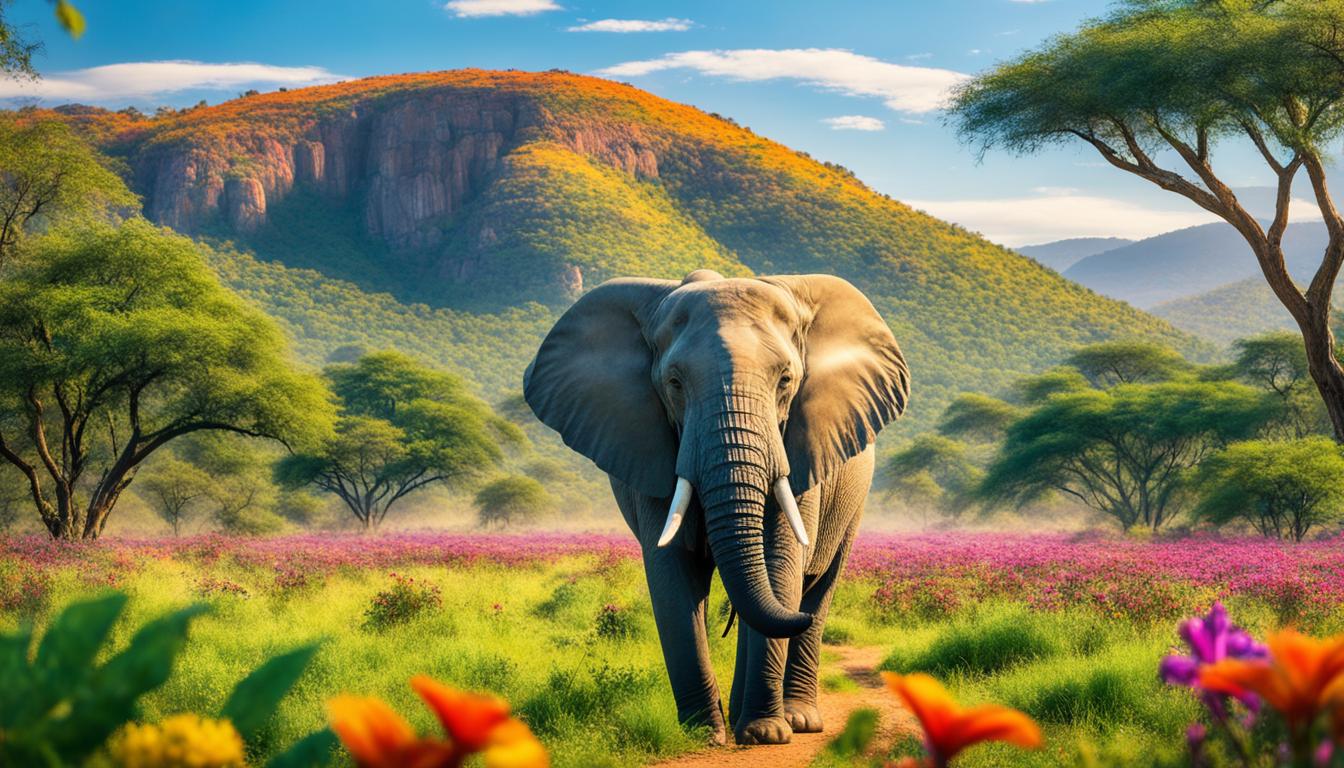Zambia Biodiversity: Animal and Plant Species and What Is Under Threat
Did you know that Zambia is home to over 3,500 species of plants, 750 species of birds, and 350 species of mammals? This African nation boasts an incredible wealth of biodiversity, showcasing the wonders of nature in all its glory. From the majestic African elephant to the vibrant flora of its wetlands, Zambia is a paradise for wildlife enthusiasts and conservationists alike.
Key Takeaways:
- Zambia is blessed with a remarkable richness of biodiversity.
- The country is home to thousands of plant and animal species.
- Zambia’s diverse ecosystems provide essential ecosystem services.
- Biodiversity conservation is crucial for the sustainable development of the country.
- Efforts are needed to protect Zambia’s unique and endangered species.
Importance of Biodiversity in Zambia
The biodiversity in Zambia plays a crucial role in providing ecosystem goods and services for national economic development and the livelihoods of its people, especially those in rural areas. The forests, agro-ecosystems, and wetlands are key components of the country’s natural system integrity. Biodiversity research plays a significant role in understanding and conserving the unique species found in Zambia.
With its diverse range of ecosystems, Zambia is home to a wealth of plant and animal species. From the lush green forests to the flourishing wetlands, the country’s biodiversity is a treasure trove of natural wonders. The various ecosystems in Zambia support a delicate balance of flora and fauna, allowing for the provision of essential goods and services that contribute to the well-being of the nation.
Research conducted on Zambia’s biodiversity provides valuable insights into the intricate web of life that exists within its borders. By studying the different species and their habitats, scientists can better understand the ecological processes and relationships at play. This knowledge is vital for effective conservation efforts and the sustainable management of Zambia’s natural resources.
The rich biodiversity of Zambia not only enhances the country’s natural beauty but also brings numerous benefits to its people. Sustainable agriculture practices in the agro-ecosystems ensure food security and livelihoods for the rural population, while the wetlands provide important functions such as water purification and flood control.
Biodiversity research in Zambia helps uncover the hidden gems of the country’s ecosystems, allowing for the identification of new species, understanding of their ecological roles, and assessment of their conservation status. By protecting and conserving these unique species, Zambia can safeguard its natural heritage for future generations.
Approach to Biodiversity Conservation
Zambia’s approach to biodiversity management is centered around the effective conservation and preservation of its rich natural resources. The country has taken significant steps towards this goal through the establishment and management of protected areas under different government and statutory bodies. These protected areas include national parks, game management areas, and forest reserves, collectively covering a substantial portion of the land.
However, despite these conservation efforts, there is a recognized need for a more cohesive and unified approach to biodiversity management in Zambia. This involves the development and implementation of an integrated plan that addresses the current fragmented sector-based activities. Such a plan would facilitate better coordination, collaboration, and monitoring of biodiversity conservation measures, ensuring the long-term sustainability of Zambia’s natural heritage.
The key components of an effective biodiversity management plan in Zambia would include:
- Implementation Plan: A comprehensive roadmap outlining specific actions, targets, and timelines for conservation initiatives across different ecosystems and regions.
- Monitoring Framework: A robust system for monitoring and evaluating the status and trends of biodiversity in the country, providing valuable data for evidence-based decision-making and adaptive management.
“Effective biodiversity management in Zambia requires a coordinated and strategic approach, involving all stakeholders, from government agencies to local communities. By working together, we can ensure the conservation of our unique natural heritage for future generations.” – Dr. Sarah Ng’uni, Biodiversity Conservation Expert
By adopting a more holistic and integrated approach to biodiversity conservation, Zambia can enhance its efforts in protecting and preserving its diverse ecosystems, endangered species, and the vital ecosystem services they provide. This not only safeguards the country’s natural heritage but also contributes to sustainable development and the well-being of its people.
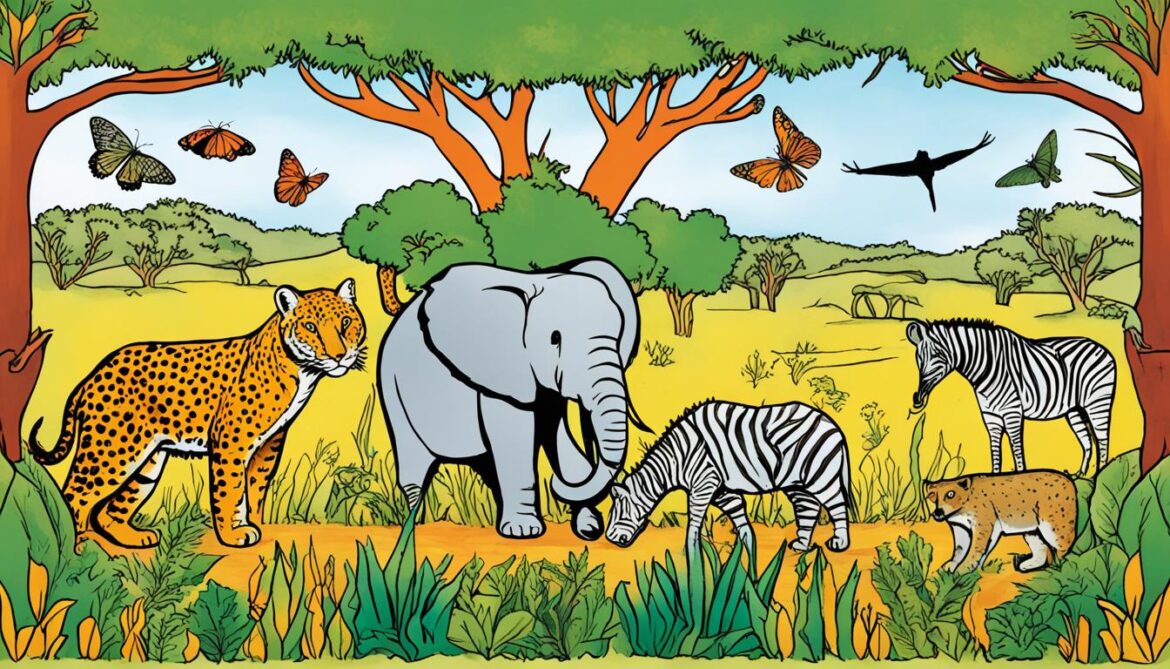
Key Elements of an Integrated Biodiversity Management Plan
| Elements | Description |
|---|---|
| 1. Conservation Zones | Designation and management of protected areas to safeguard biodiversity hotspots and critical habitats. |
| 2. Ecosystem Restoration | Initiatives to restore degraded ecosystems and promote habitat connectivity for species conservation. |
| 3. Community Engagement | Involvement of local communities in conservation efforts, ensuring their participation, empowerment, and benefits. |
| 4. Sustainable Land Use | Promotion of sustainable agricultural practices, land-use planning, and biodiversity-friendly development. |
| 5. Legislative Framework | Development and enforcement of policies, laws, and regulations to support biodiversity conservation. |
| 6. Scientific Research | Investment in biodiversity research, monitoring, and knowledge generation for informed decision-making. |
Implementing an integrated biodiversity management plan in Zambia will require collaborative efforts involving government agencies, local communities, civil society organizations, and international partners. By working together, Zambia can strengthen its conservation initiatives and secure a sustainable future for its precious biodiversity.
Status of Biodiversity
In Zambia, the national protected areas system is composed of national parks, game management areas, and forest reserves, all of which provide crucial habitats for a diverse range of plant and animal species. These protected areas play a significant role in conserving the rich wildlife in Zambia and ensuring the survival of endangered species.
Wildlife Diversity
Zambia is home to a remarkable array of wildlife, with a wide variety of species inhabiting its diverse ecosystems. From large mammals like elephants, lions, and giraffes to smaller creatures such as antelopes, zebras, and monkeys, the country’s wildlife showcases the beauty and vibrancy of nature.
“Zambia’s wildlife is a testament to the country’s commitment to biodiversity conservation and the importance of protecting endangered species.” – Conservationist Jane Smith
Endangered Species
Unfortunately, Zambia also faces the challenge of protecting its endangered species. The destruction of habitats and illegal hunting pose significant threats to the survival of these vulnerable creatures. Efforts are being made to address these issues and implement robust conservation strategies to safeguard the future of endangered species in Zambia.
Table: Endangered Species in Zambia
| Species | Status |
|---|---|
| African Elephant | Endangered |
| Cheetah | Endangered |
| Black Rhino | Critically Endangered |
| Wild Dog | Endangered |
| White-backed Vulture | Critically Endangered |
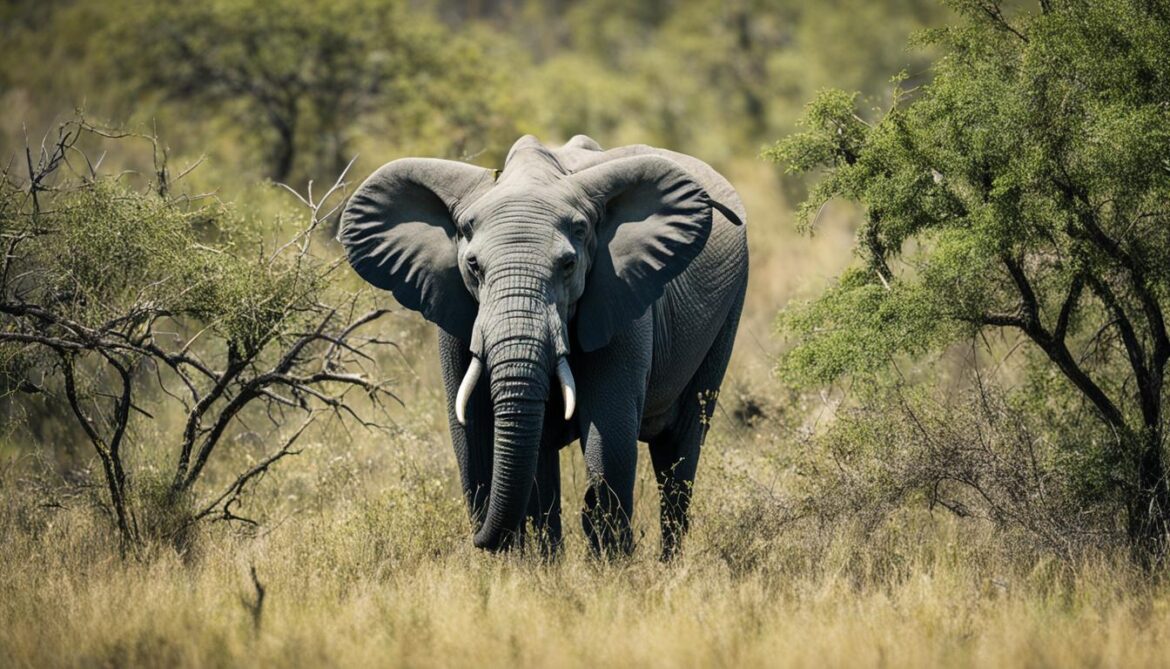
Zambia’s commitment to biodiversity conservation includes protecting its endangered species and working towards sustainable solutions to maintain the delicate balance between human activities and the natural environment. By promoting awareness and implementing effective conservation measures, Zambia strives to preserve its wildlife heritage for generations to come.
Wetlands in Zambia
Zambia is home to eight wetlands of international importance, showcasing the country’s commitment to the conservation of these precious ecosystems. These wetlands not only provide habitats for a diverse range of flora and fauna species, but they also play a vital role in supporting the livelihoods of rural populations and contributing to the thriving fisheries sector.

The Kafue Flats, Bangweulu Swamps, and Lake Tanganyika are among the notable wetlands in Zambia. These wetlands harbor several endemic and endangered species, emphasizing their ecological significance. They serve as important breeding grounds and nurseries for various aquatic organisms, supporting the intricate balance of life within these habitats.
“The wetlands of Zambia are a treasure trove of biodiversity, offering unique opportunities for research, conservation, and sustainable development.” – Dr. Jane Mwamba, Biodiversity Researcher
The wetlands not only support the local biodiversity but also have a direct impact on the livelihoods of communities residing in the surrounding areas. They provide valuable resources for fishing, agriculture, and tourism, contributing to the economic well-being of local populations.
Wetlands in Zambia: Key Features
| Wetland | Location | Notable Species |
|---|---|---|
| Kafue Flats | Central Zambia | African fish eagle, open-billed stork, puku antelope |
| Bangweulu Swamps | Northern Zambia | Wattled crane, shoebill stork, lechwe antelope |
| Lake Tanganyika | Eastern Zambia | Yellow-banded catfish, lake Tanganyika sardine, cichlid fishes |
Conserving the wetlands in Zambia is paramount to ensure the preservation of these unique ecosystems and the sustainability of the communities that depend on them. Efforts are being made to enhance wetland management, promote research initiatives, and implement measures for the protection and restoration of these vital habitats.
By safeguarding the wetlands in Zambia, we can protect the biodiversity, promote sustainable development, and secure a prosperous future for both nature and society.
- Preserving the delicate balance of wetland ecosystems
- Supporting rural livelihoods and economic activities
- Ensuring the survival of endemic and endangered species
- Facilitating research opportunities and knowledge expansion
Agro-Ecosystems in Zambia
Zambia’s agro-ecosystems play a vital role in the country’s agricultural sector and contribute to sustainable tourism. These agro-ecosystems are classified into three regions based on rainfall patterns and exhibit diverse farming systems and dominant crops. Agro-ecological Zone II is recognised as the major agricultural production area, known for its maize, tobacco, and cotton cultivation. Zone III, characterised by high rainfall, focuses on livestock production and the cultivation of crops such as maize, groundnuts, and millet.
Agro-biodiversity is a valuable resource for Zambia, as it fosters resilience and enhances the productivity and sustainability of farming systems. Unfortunately, these agro-ecosystems face several threats such as unplanned cultivation and environmental changes. The expansion of agriculture into natural habitats poses a risk to biodiversity and the delicate balance of ecosystems. Climate change also poses challenges, affecting rainfall patterns and overall agricultural productivity.
“Zambia’s agro-ecosystems are not only key to food security and livelihoods but also support sustainable tourism in the country.”
Agro-ecosystem conservation is crucial for the long-term sustainability of Zambia’s biodiversity and the promotion of sustainable tourism. Preserving the diverse range of crops, plants, and animal species not only protects the natural heritage but also contributes to the unique tourism experiences that Zambia has to offer. Sustainable tourism in Zambia relies heavily on the conservation of agro-ecosystems, which enhance the scenic beauty, cultural heritage, and natural attractions that attract visitors from around the world.
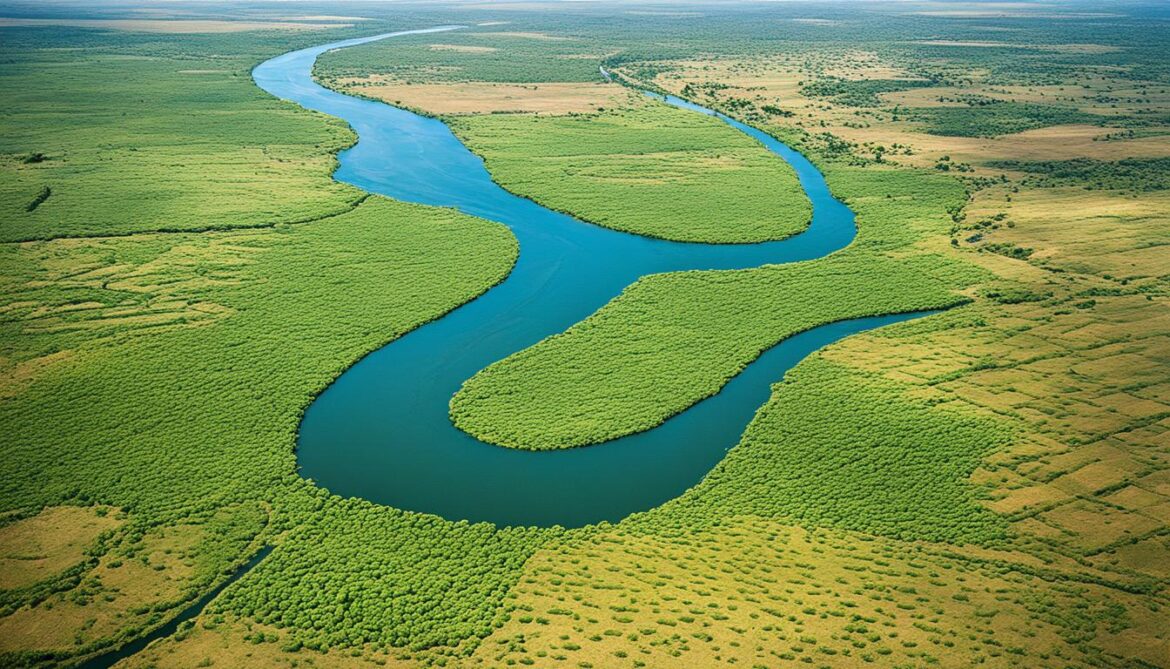
Key Crops in Different Agro-Ecological Zones
| Agro-Ecological Zone | Dominant Crops |
|---|---|
| Zone II | Maize, tobacco, cotton |
| Zone III | Maize, groundnuts, millet |
Important Bird Areas in Zambia
Zambia is home to a diverse array of bird species, making it a haven for birdwatching enthusiasts and nature lovers. The country boasts a network of 42 Important Bird Areas (IBAs) that cover approximately 14% of the land surface. These IBAs play a vital role in the conservation of bird species, providing essential habitats for their survival.
With around 82% of the IBAs receiving some form of protection, efforts are being made to safeguard Zambia’s avian biodiversity. However, the conservation of these areas is crucial as there has been a decline in site occupancy and certain bird species are now considered endangered.
To illustrate the significance of these IBAs, below is a table highlighting some of Zambia’s most important bird areas:
| Important Bird Area | Protected Status |
|---|---|
| Kafue Flats | Partially protected |
| Bangweulu Swamps | Fully protected |
| South Luangwa National Park | Fully protected |
| Lower Zambezi National Park | Partially protected |
The conservation of these important bird areas is crucial not only for the preservation of Zambia’s rich avian biodiversity but also for maintaining the ecological balance of the entire ecosystem. By protecting these habitats, we ensure the survival and well-being of countless bird species that rely on them.
Endangered Bird Species in Zambia
“The decline in site occupancy and the categorization of certain bird species as endangered serve as a wake-up call for the urgent need to protect and conserve Zambia’s avian biodiversity.” – Wildlife Conservation Society
Zambia is home to several endangered bird species, some of which are found within the Important Bird Areas. The preservation of these species requires intensified conservation efforts and targeted actions to address the threats they face.
By raising awareness about the importance of these bird areas and implementing effective conservation strategies, we can ensure the long-term survival of Zambia’s avian biodiversity. It is our collective responsibility to protect these habitats and species for future generations to appreciate and enjoy.
Forests and Biodiversity
Forests in Zambia play a vital role in supporting natural systems and improving the livelihoods of the rural poor. The country’s forests not only provide a range of goods for local communities but also serve as repositories of biodiversity. They are home to a diverse array of flora and fauna, contributing to the rich ecological heritage of Zambia.
Furthermore, forests play a significant role in Zambia’s economy, with direct and indirect forest values contributing to the GDP. The timber industry, non-timber forest products, and ecotourism are just a few examples of the economic benefits derived from forest resources.
However, managing and conserving forest biodiversity pose significant challenges. Deforestation due to agricultural expansion, logging, and infrastructure development threatens the delicate balance of ecosystems and endangers numerous plant and animal species. Additionally, climate change amplifies these challenges, placing even greater pressure on Zambia’s forests.
To address these challenges and ensure the long-term sustainability of forest biodiversity, effective biodiversity management is crucial. It requires a multi-faceted approach that includes:
- Promoting sustainable forestry practices, such as selective logging and reforestation initiatives
- Implementing protected area networks to safeguard critical forest ecosystems and their inhabitants
- Engaging local communities in sustainable forest management and alternative livelihood options
- Strengthening law enforcement and monitoring mechanisms to combat illegal logging and encroachment
- Integrating climate change adaptation and mitigation strategies into forest management plans
By adopting these measures and prioritizing biodiversity management, Zambia can contribute to the global efforts aimed at conserving forests and preserving their invaluable biodiversity.

Preserving Forest Biodiversity: A Key Priority
“Our forests are more than just trees. They are the guardians of a rich and intricate web of life, supporting countless species and providing us with essential ecosystem services. It is our responsibility to protect and preserve this invaluable natural heritage for future generations.” – Jane Mwape, Conservation Biologist
Fish Species in Zambia
Zambia is home to a diverse range of fish species, with approximately 490 species belonging to 24 families. The country’s major fishery areas include Lake Tanganyika, Lake Kariba, and the Kafue River floodplain. The abundance of fish species in Zambia plays a crucial role in providing an important source of protein for the Zambian population, contributing to their nutrition and food security.

One of the iconic fish species found in Zambia is the Tilapia. It is widely distributed in the country’s freshwater ecosystems and is highly valued for its delicious taste. The presence of Tilapia in lakes and rivers provides significant economic opportunities for local communities engaged in fishing and aquaculture activities.
Fish Species Diversity
The fish species in Zambia exhibit a remarkable diversity in terms of their sizes, shapes, and behavior. From small-sized species like the dwarf cichlids to larger predatory fish species like the tiger fish, Zambia’s aquatic ecosystems offer a rich variety for both recreational and commercial fishing.
“The rivers and lakes of Zambia are teeming with a wealth of fish species, providing a haven for anglers and a source of livelihood for fishing communities.” – Fisherman’s Digest
Importance of Fisheries
The fisheries subsector in Zambia contributes significantly to the country’s economy, providing employment opportunities and income generation for many communities. Apart from being a source of food and nutrition, fish farming and fishing activities also promote tourism and enhance sustainable livelihoods for rural populations.
| Fish Species | Habitat | Commercial Importance |
|---|---|---|
| Tilapia | Lakes and rivers | High |
| Tiger Fish | Rivers and dams | Moderate |
| Bream | Lakes, rivers, and swamps | High |
| Barbel | Rivers | Moderate |
Table: Commercially Important Fish Species in Zambia
The sustainable management and conservation of fish species in Zambia are crucial to ensure the long-term viability of the fisheries industry and the preservation of aquatic ecosystems. Efforts are being made to regulate fishing practices and promote responsible fishing methods to protect vulnerable species and maintain fish populations at sustainable levels.
Crop and Livestock Genetic Resources
Zambia boasts a diverse range of crop and livestock genetic resources, contributing to its agricultural and livestock sectors. Indigenous crops, including sorghum, millets, and cowpea, form a substantial part of the country’s cultivated crops. These crops are well-adapted to local conditions, showcasing their resilience and ability to thrive in Zambia’s diverse agro-ecological zones.
In order to preserve and protect crop diversity, Zambia has established a gene bank that conserves a wide variety of crop species. The gene bank acts as a vital resource, ensuring the long-term availability of crop genetic resources for future generations. Efforts are also underway to collect and conserve crop wild relatives, which are critical for crop improvement and resilience against emerging challenges, such as climate change and plant diseases.
When it comes to livestock production, Zambia predominantly relies on indigenous breeds. These breeds have evolved over time and possess natural resistance to diseases and parasites commonly found in the local environment. Furthermore, they require minimal management compared to exotic breeds, making them well-suited for the farming practices and resource constraints of smallholder farmers in Zambia.
The utilization of crop and livestock genetic resources plays a vital role in ensuring food security, supporting rural livelihoods, and promoting sustainable agriculture in Zambia. Through the conservation and utilization of these resources, Zambia can harness the potential of its diverse agricultural landscape while preserving its unique genetic heritage.

Indigenous Crops in Zambia
| Crop | Main Uses |
|---|---|
| Sorghum | Food, brewing |
| Millets | Food, animal feed |
| Cowpea | Food, fodder, nitrogen fixation |
Indigenous Livestock Breeds in Zambia
| Livestock Species | Breed | Main Uses |
|---|---|---|
| Cattle | Tonga | Draft power, meat, milk |
| Goat | Tumbuka | Meat |
| Chicken | Kabir | Egg, meat |
Invertebrates and Endangered Species
Zambia is home to a diverse range of invertebrate species, with an estimated 6,135 species. Among the most diverse groups are molluscs, insects, and snails. These fascinating creatures play a crucial role in the ecosystem, contributing to processes such as pollination, decomposition, and nutrient cycling.
Unfortunately, some invertebrate species in Zambia are endangered and face significant threats to their survival. Currently, 14 freshwater molluscs are listed as endangered, highlighting the urgent need for conservation efforts.
The conservation of invertebrate species and their habitats is essential for maintaining the biodiversity of Zambia. Protecting these unique and often overlooked creatures is crucial to ensuring the overall health and balance of the ecosystem.
In order to address this issue, initiatives are being undertaken to raise awareness about the importance of invertebrates and their role in the ecosystem. Conservation organizations, researchers, and local communities are working together to implement sustainable practices that minimize the negative impacts on these delicate species.
“The conservation of invertebrates is critical for the preservation of the entire ecosystem. These small, often unnoticed creatures play a fundamental role in maintaining the balance and functionality of our natural world.” – Dr. Elizabeth Jones, Entomologist
By promoting education, habitat preservation, and responsible land and water management, we can protect the invertebrates and their habitats in Zambia. This will not only preserve their unique beauty but also ensure the long-term sustainability of the country’s biodiversity.
Conclusion
Zambia boasts a remarkable biodiversity that plays a pivotal role in supporting the nation’s economy and rural communities. However, the diverse ecosystems of Zambia face numerous threats from human activities and a lack of cohesive conservation efforts. While strides have been made in protecting and preserving these invaluable resources, sustained action is imperative to ensure the long-term sustainability of Zambia’s biodiversity.
Conservation of biodiversity in Zambia is crucial to safeguarding the delicate balance of the country’s ecosystems and the services they provide. Efforts to mitigate these challenges must be underpinned by a unified approach that spans sectors and encompasses effective management practices. By integrating and coordinating conservation initiatives, Zambia can better address the threats facing its diverse species and habitats.
Preserving Zambia’s biodiversity is not just a matter of ecological importance but also essential for the well-being and livelihoods of communities reliant on natural resources. With heightened awareness and commitment, Zambia can leverage its rich biodiversity to drive sustainable development, benefitting both present and future generations. The conservation of Zambia’s ecosystems, the protection of its remarkable biodiversity, and the promotion of responsible practices are vital steps towards a resilient and prosperous future.




